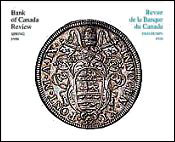May 14, 1998
Recent developments in the monetary aggregates and their implications
This article examines the developments in the monetary aggregates over the course of 1997 and their implications for future economic activity.
The narrow aggregate, M1, grew rapidly in the first half of 1997 but slowed somewhat during the second half of the year. Much of the strong growth in this aggregate over the last several years has been associated with a higher demand for transactions balances as interest rates declined and economic activity revived. There were some special factors at play, however, that are discussed in the article. The Bank expects some slowing in M1 growth through 1998 and into 1999. This would be consistent with a trend of inflation within the inflation-control target range of 1 to 3 per cent over the next couple of years.
Growth in the broad aggregate, M2+, continued to be distorted by the shift of savings out of fixed-term deposits into mutual funds. A broader aggregate that includes M2+, CSBs, and all mutual funds and thus provides a better estimate of broad money growth, grew at a moderate pace during 1997. The recent behaviour of the broad monetary aggregates continues to suggest that inflation will remain low in coming years.
